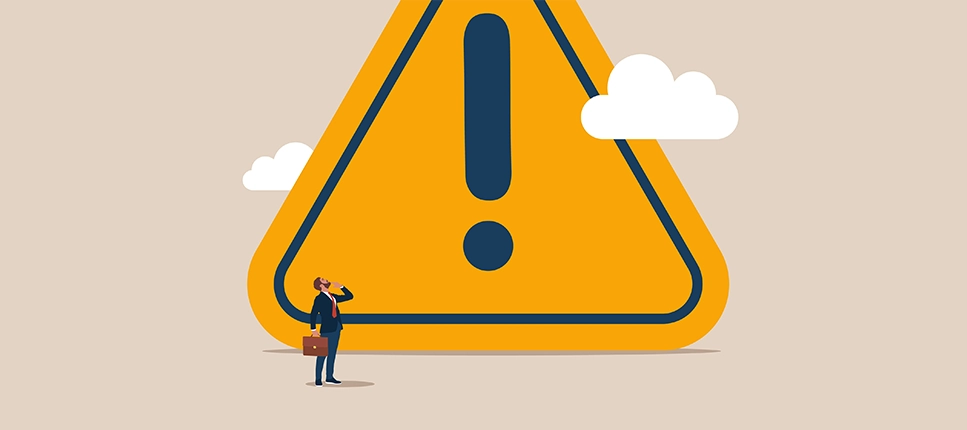Do you have any idea how many thoughts we have in a day? Do you know the characteristics of the brain at different life stages? Do you know how stress affects the brain and how to help the brain to relax? Do you have any idea of the contribution of neuroscience to education? Test your knowledge by answering the following five questions.
1. True or false? On average, we have more than 6,000 thoughts in a day.
CORRECT ANSWER
TRUE
Canadian researchers arrived at this figure using a novel method to detect the transition from one thought to another. (Tseng and Poppenk, 2020)
Find out more: Brain activity in numbers
2. Which of the following statements is incorrect?
A) The brain retains the ability to evolve and adapt throughout life.
B) Cognitive automation is the culmination of the learning process, whereby through repetition and practice, our knowledge is transformed from conscious to automatic processing. And once one learning is automated, the brain is free to move on to the next.
C) Dyslexia, dyscalculia, and dementia are the known neurological problems that impact learning or cognition and for which neuroscience has so far contributed the most in terms of diagnosis or remediation.
D) The prefrontal cortex – the seat of executive control, reasoning and decision making – matures around the age of 18.
CORRECT ANSWER
D.
The prefrontal cortex is more likely to mature around the age of 30.
Find out more: 3 Ages of the Brain Under the Microscope of Neuroscience
3. True or false? When we are stressed, the stress hormones we produce access our brain and change how we interpret the situation we are in.
CORRECT ANSWER
TRUE
It is important to know that our bodies do not distinguish between “absolute stress,” which is life-threatening, and “relative stress.” In the latter case, stress occurs when we find ourselves in a situation with one or more of these characteristics: little control, unpredictability, novelty and threat to our ego. Thus, when faced with relative stress, “you produce a stress response similar to the one you produce when faced with absolute stress, i.e. you secrete stress hormones that will then access your brain and modify the way you interpret the situation,” says neuroscientist Sonia Lupien. To think clearly again, you need to take a step back and regain your composure… a sign that the stress hormones have diminished.
Find out more: Dealing with uncertainty in 3 steps
4. Which of the following statements is/are true?
A) We spend almost half of our day with the head in the clouds, a state in which our brain is in default network mode.
B) People who are more likely to be with their heads in the clouds are generally happier.
C) Being absorbed in a task, i.e. being focused, is very tiring for the brain.
D) Going out for a drink, eating at a restaurant or going to a movie is a very effective activity for the brain to unwind and recover.
E) Without a conscious and planned effort to break our habits, the brain tends to reproduce the behaviours it knows well and has earned it a reward. This is why rest must be considered strategically.
CORRECT ANSWER
A. and E.
Answers B, C and D are incorrect since :
- According to a Harvard survey, the more we are with the head in the clouds – thus in default network mode – the more unhappy we tend to be, and on the contrary, the more invested we are in an activity, whatever it may be, the more satisfied we feel.
- Being absorbed in a task without our attention being “divided” or our mind constantly wandering is not in itself a source of fatigue; on the contrary. “By being totally involved in what we are doing, without trying to do several things at the same time, we also reduce the conflicts in the brain: there is no longer any doubt about what is important and what is not. […] There is no negative interference between brain regions involved in contradictory cognitive processes. The result is a feeling of calm: what is commonly called mental overload is reduced,” explains cognitive neuroscientist and attention specialist Jean-Philippe Lachaux.
- Going out for a drink, eating at a restaurant or going to the movies are passive and exogenous activities. As neuropsychologist Guillaume Dulude explains: “Anything that is passive or exogenous does not work. I’m not saying you shouldn’t do it; I’m just saying that the brain won’t relax in the same way because it’s too easy to “consume.” So anything that is consuming, that is external reinforcement, anything that is psychotropic, is going to give a short-term superficial rest, but it’s not going to recharge.
Find out more:
5. Select the correct term to complete each of the following statements about the contributions of neuroscience to education.
Terms: knowledge; certain brain characteristics; known conditions; learning problems; teaching and learning practices
Neuroscience allows us to…
- Find the cause and effect relationship, i.e., scientific evidence, between what happens in the brain and ________ observed by other means (in vivo observations, outcome studies, etc.).
- Unveil ________ that affect learning and that cannot be seen in any other way than by studying the brain.
- Develop remediation approaches based on the brain mechanisms responsible for ________.
- Generate new ________ and new avenues of exploration on brain development and function in relation to learning.
- Guide the adaptation ________ to promote optimal processing by the brain (means, timing, etc.).
CORRECT ANSWER
Complete, correct statements are:
Neuroscience allows us to…
- Find cause and effect relationship, i.e., scientific evidence, between what is happening in the brain and known conditions observed by other means (in vivo observations, outcome studies, etc.).
- Unveil certain brain characteristics that affect learning and that are not seen in any other way than by studying the brain.
- Develop remediation approaches based on the brain mechanisms responsible for learning problems.
- Generate new knowledge and avenues of exploration on brain development and function in relation to learning.
- Guide the adaptation of teaching and learning practices to promote optimal processing by the brain (means, timing, etc.).
To learn about the five other contributions of neuroscience to education: 10 contributions of neuroscience to education
Author:
Catherine Meilleur
Creative Content Writer @KnowledgeOne. Questioner of questions. Hyperflexible stubborn. Contemplative yogi.
Catherine Meilleur has over 15 years of experience in research and writing. Having worked as a journalist and educational designer, she is interested in everything related to learning: from educational psychology to neuroscience, and the latest innovations that can serve learners, such as virtual and augmented reality. She is also passionate about issues related to the future of education at a time when a real revolution is taking place, propelled by digital technology and artificial intelligence.





